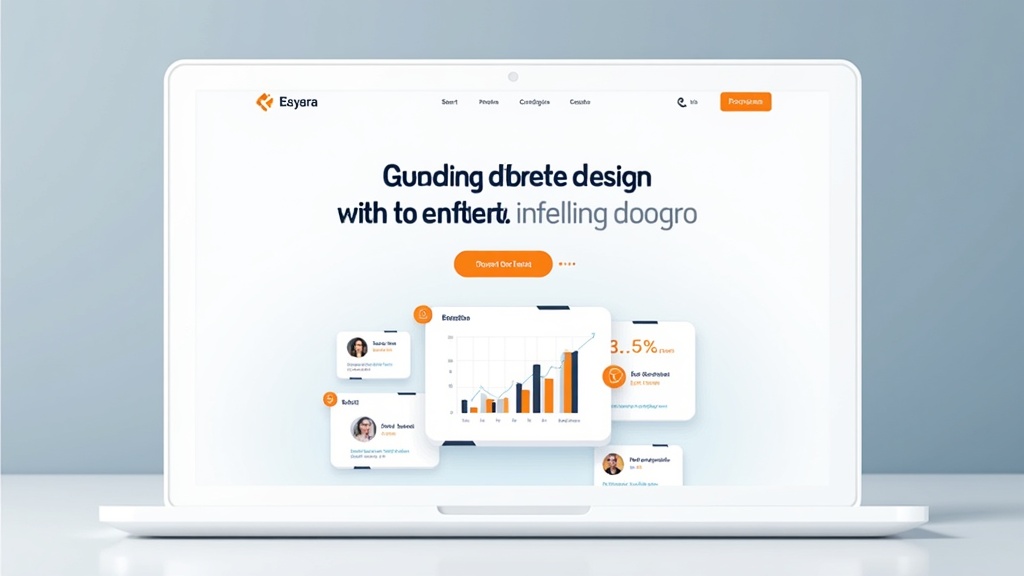Landing page optimization is one of the most practical steps I take to increase conversions and make the most out of website traffic. An optimized landing page does more than just look nice; it helps visitors take clear action, whether that means signing up, buying, or downloading something useful.
For anyone new to digital marketing or website building, making sense of all the advice out there can feel overwhelming. I want to show how simple changes and clear strategies really help. A landing page with a focused message and smooth user experience often works best.
My experience has shown that even small tweaks, when intentional and data-driven, can lead to more leads, better sales, and fewer wasted clicks. If you’re searching for information on how to optimize landing pages for SEO, a reliable landing page optimization checklist, landing page conversion optimization techniques, or insight into the best platforms for landing page creation, this guide covers the essentials in clear detail. I’m happy to walk through steps that have worked for me and highlight areas where careful attention really pays off.
So, here’s what I always keep in mind when working to improve or build an effective landing page from the ground up.
Know the Purpose of Your Landing Page
Before making any changes, I need to be clear about what my landing page should accomplish. Every successful landing page has a single primary goal, called a call to action (CTA). This could be collecting emails, selling a product, getting sign-ups, or anything else specific and actionable.
Common Landing Page Goals:
- Grow an email list (newsletter signup, content upgrade offer)
- Sell a digital or physical product
- Promote a webinar or free event
- Direct visitors to start a free trial
- Encourage form completions (quote requests, surveys, downloads)
Deciding on one clear goal helps me keep everything else on the page focused. If I try to do too much, I usually end up with lower conversion rates and confused visitors.
Understand Your Audience
The most effective landing pages are designed for a specific group of people. When I build a landing page, I focus on the audience’s needs, problems, and what motivates them to act. This means talking to real customers or using surveys, reviews, and website analytics to get a better sense of what matters to them.
How I Research My Audience:
- Look at Google Analytics or similar data to see where visitors come from
- Review customer support questions, comments, or emails for common pain points
- Use short surveys or polls to learn what people want from my product or service
- Check out what competitors are offering and see how their visitors react
By focusing my headlines, copy, and visual design on the real needs of my audience, I see better engagement and, usually, higher conversion rates.
Landing Page Optimization Checklist
Having a simple landing page optimization checklist helps me avoid missing anything important. Careful planning at the start saves time and lets me fix issues quickly.
My Landing Page Optimization Checklist Covers:
- Clear, compelling headline that shows the main benefit
- Concise, action-focused subheading
- An easy to see, single call to action (CTA) button
- Minimal distractions; limited links and no unnecessary navigation
- Fast loading time, ideally under 3 seconds
- Mobilefriendly design
- Relevant images or videos supporting my message
- Trust signals (such as testimonials, reviews, or security badges)
- Short forms, only the fields truly needed
- Search engine optimization for keywords and meta tags
I keep this list handy every time I launch or update a landing page to make sure I stay on track.
Craft a Strong Headline and Value Proposition
The headline is the first thing visitors see. I make sure it’s bold, simple, and instantly tells visitors what benefit they’ll get by staying on the page. My value proposition (the main promise or offer) should be clear in the headline or in the first sentence below it.
Tips That Work for Me:
- Lead with the strongest benefit, not just features
- Keep it direct; avoid clever wordplay that causes confusion
- Repeat the value proposition in the CTA for added clarity
Headline Examples That Stand Out:
- “Get Your Free Guide to Social Media Success”
- “Start Your 14 Day Free Trial Today”
- “Stumble upon the Easiest Way to Organize Your Finances”
Visitors respond best when the benefit is specific and feels personally relevant to them.
Create a Clear and Compelling Call to Action (CTA)
My CTA is the action I want users to take. I focus on making it stand out, both visually and with clear language. The CTA should be easy to spot, even for someone who’s just skimming the page.
How I Improve CTAs:
- Use a color that contrasts with the rest of the page
- Keep the button text specific, such as “Download My Free Guide” instead of “Submit”
- Repeat the CTA in more than one spot if the landing page is long
- Make the next step low-risk; try “Try Free for 7 Days” instead of “Buy Now”
Testing different versions of CTAs has worked for me. Sometimes, just changing one word can boost conversions noticeably.
Landing Page Conversion Optimization Techniques
To get more conversions, I often use proven landing page conversion optimization techniques. These go beyond design and focus on the psychology of why people say yes.
My Favorite Techniques:
- A/B Testing: I test two versions of my page to see which one works better.
- Social Proof: Adding real customer reviews, testimonials, or logos from recognized brands builds trust.
- Limited Time Offers: Promoting bonuses or discounts for a short period creates urgency.
- Reduce Friction: Shorten forms and ask for less information. I know people love when things feel easy.
- Answer Questions: I preempt common questions or concerns with a simple FAQ section.
Personal Example:
I once cut my signup form from five fields down to two and noticed signups nearly doubled. Small changes really do matter.
Landing Page Best Conversion Practices
By following landing page best conversion practices, I get more out of each visitor. These best practices come from working on dozens of landing pages over the years and from reviewing research and case studies from reliable sources like HubSpot and Unbounce.
Principles That Guide Me:
- Keep the message focused; remove extra text and visuals
- Make the offer irresistible and risk-free
- Reassure visitors with privacy and security statements
- Optimize for mobile first. Most traffic comes from smartphones now
- Follow a logical eye path from headline to CTA (often using directional cues like arrows or images facing the form)
Adding video can sometimes increase conversions, as long as it’s short and directly related to the offer.
How to Optimize Landing Pages for SEO
I pay close attention to how to optimize landing pages for SEO because ranking higher in search engines earns me free, targeted traffic. My biggest wins come from optimizing meta tags, headlines, keywords, and page speed but not overloading the page with keywords or text.
SEO Tactics I Use:
- Include the main keyword naturally in the headline and at least once in the body
- Add a descriptive meta title and meta description
- Optimize all images with alt text
- Use internal links to important resources or related landing pages when it makes sense
- Watch how quickly the page loads. Google rewards fast sites
- Minimize popups or interstitials that could hurt rankings or annoy users
By following these tips, I strike a balance between SEO and keeping my landing pages clear for real people.
Test, Measure, and Adjust Regularly
Continuous testing helps me find what works best and where I can improve. I use tools like Google Optimize, Unbounce, or the built-in A/B testing from my landing page builder to make changes and measure the impact.
Metrics I Track:
- Conversion rate (% of visitors completing the main action)
- Bounce rate (how many leave without taking action)
- Average time on page
- Scroll depth (how far people scroll before leaving)
Adjusting wording, color, layout, and even small details in the form or CTA often leads to small but steady growth in conversions over time.
Mobile Optimization and Page Speed
Most of my visitors come from mobile devices. If my landing page loads slowly or looks awkward on a phone, I lose potential leads or sales. I focus on making sure images are compressed, forms are easy to use, and all buttons and links are big enough for tapping.
Key Mobile Optimization Tips:
- Use single column layouts
- Compress images as much as possible
- Simplify menus and navigation
- Make use of whitespace for clear separation
I also check my landing page performance in Google’s PageSpeed Insights and make regular updates to address any issues that show up there.
Visuals and Trust Signals
Images, illustrations, and videos on a landing page help break up text and hold attention. I only use media that directly supports my offer. Trust signals, like testimonials, partner logos, badges, or user ratings, are placed near my CTA for maximum effect.
How I Pick Visuals:
- Use custom images or quality stock photos that match my audience
- Keep designs simple; too much movement distracts
- Show real outcomes, like before/after photos or success stories
Adding eye-catching graphics or short, relevant videos can be a way to keep users interested and explain your offer simply. But I avoid flashy animations that may slow down page speed or distract from the main message.
Choosing the Best Platform for Landing Page Creation
When I build landing pages, I look for tools that offer drag and drop functionality, reliable analytics, easy integrations, and solid support. Picking one of the best platforms for landing page creation helps speed up the process and gives me more confidence in making changes without needing code.
Options I’ve Found Helpful:
- Unbounce: Great for A/B testing, plenty of templates
- Leadpages: Userfriendly for beginners, mobileoptimized designs
- Instapage: High customization for pros, especially for agencies
- HubSpot Landing Pages: Full CRM and analytics suite for business owners
- Elementor or Divi (for WordPress): Ideal when I already have a WordPress site
The best platform for me depends on my goals, my budget, and my design skills. Most offer free trials, so I try a few before committing.
Common Issues and Troubleshooting
My Landing Page Isn’t Converting. What Do I Check First?
I double-check my headline and value proposition. If people aren’t sure what they’re getting or why they should care, they leave. I review the length of my forms. If I ask for too much, people drop out.
Visitors Aren’t Seeing My CTA
- Increase contrast between the button and background
- Move the CTA higher so it’s visible without scrolling
- Add directional cues like arrows or people looking toward the button
My Traffic Is High but Conversions Are Low
- Check for technical issues on mobile
- Run A/B tests on copy and visuals
- Add or refresh testimonials and trust signals
Your Action Plan for Landing Page Optimization
Getting better results from any landing page means making steady improvements over time. I like setting aside regular time each month to review and adjust my pages based on what I learn from analytics and feedback.
Steps to Take Right Away:
- Pick one top goal or CTA for your landing page; clarity matters most.
- Review the landing page optimization checklist before launching or updating any page.
- Test changes, track what works, and keep experimenting.
Landing page optimization is never “done.” There’s always something to refine. Each success, no matter how small, adds up to more conversions and better results. If you have a landing page ready, give some of these tips a try and see what changes help you the most.
If you’re feeling unsure about your next move or want a second opinion, don’t hesitate to ask a friend or colleague to look over your landing page and share honest feedback. Sometimes, a fresh pair of eyes can spot small opportunities to make things even smoother for your visitors, giving your conversion rates that extra boost.








Merci pour cette série complète, claire et orientée action. Tu montres que l’optimisation d’une landing page est bien plus qu’un exercice technique — c’est une démarche stratégique, humaine et évolutive. De la clarté du message à la fluidité mobile, chaque détail devient un levier de confiance et de conversion durable.
This is a masterful walkthrough of landing page strategy. You blend design, psychology, and performance with empathy and precision. From headline clarity to A/B testing, from trust signals to mobile speed, you turn every insight into a practical tool. Bravo for making digital optimization feel accessible, iterative, and deeply user-centered.
LANICHEDUCLIP
Merci beaucoup pour ton retour si complet et encourageant !
Je suis ravi(e) que tu aies perçu cette approche globale — au-delà de la technique, l’optimisation reste avant tout une question de clarté, d’expérience et de confiance.
Ton commentaire reflète parfaitement l’esprit de la série : rendre chaque ajustement concret, mesurable et centré sur l’humain.
Merci encore pour ton regard précis et pour valoriser cette vision d’un digital à la fois stratégique et bienveillant.